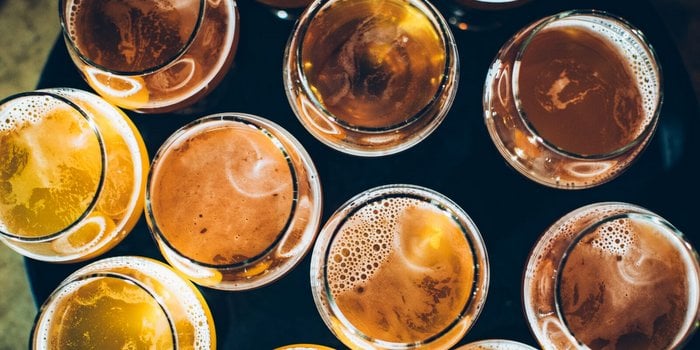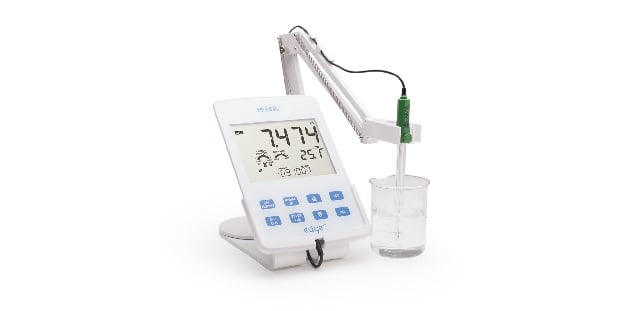
In this series of articles, Amy Todd, owner and operator of Zymurgy Labs, a third-party beer testing lab, who also works part-time in the lab at Zero Gravity Craft Brewery, gives us a detailed ground-floor view of the day-to-day lab routines that separate quality craft breweries from the pack.
I start every morning basically the same. I fill my coffee mug and head into the lab. The brewers/packaging team start their day a few hours before me so Ja Rule is already blasting as I sit down to review the schedule and plan out my day in the lab.
A well thought out, detailed schedule can make a huge impact on the day-to-day operations of a brewery. It can be hard to anticipate future needs of the brewery and balance that with employee work schedules, truck deliveries and pickups, unforeseen canning line issues, supplier delays, product demand, etc. You need enough malt to make beer and enough cans to fill with beer, but you also have a limited amount of space in the brewery.
How do you know how much beer to make, and when it needs to be available? Which beer needs to be transferred to which tank? You don’t want beer sitting in tanks taking up valuable real estate if you don’t have kegs or cans to put the beer into.
The schedule includes a ton of information, but I’m interested in when beers are brewed, packaged, transferred, chilled and dry hopped.
Let’s get started
Not every day in the lab is the same, but there are a few things I need to do every day. I collect, plate and read micro samples every day. I start each morning by looking at the schedule to determine what I need to collect samples for that day. There are a few different types of samples I collect:
- Micro sample
- ABV samples
- IBU samples
- Sensory samples
When looking at the schedule and making my list of what tanks I need to collect samples from, I look at brew dates. At Zero Gravity, we brew four 30 bbls batches a day. We have a mix of 30 bbl, 60 bbl and 120 bbl tanks. I like to give a beer at least 24 hrs in a fermentor before collecting a sample, so if there was a quad (four batches into one tank) with the last batch going in the evening before, I will wait until the next day to collect a sample from that tank.
Next I check the schedule from the week before and see what I need to collect for the second set of fermenter samples. I’m also looking to see what beers I will need to sample for ABV, more on that in a few.
I look at the transfer section to see what beers are being moved into bright tanks. Most of our beers are centrifuged before going into the bright tanks. I aim for a sample at least once from a bright tank but sometimes will take more than one. Once a week I take samples off the centrifuge on the inlet and outlet.
Let’s dig into each daily sample.
Micro samples
I run HLP (Hsu’s Lactobacillus/Pediococcus) media on all beers out of the fermenter, bright tank and package. Fermenter samples are collected at 24-48 hours into fermentation and again about seven days after fermentation.
These tanks are sampled twice because we want to know as soon as possible if we have an infection, and a second tested is needed in case there is a low level infection that was too low to detect on the first test. This ends up being about 30-45 tests per week for a brewery producing about 20,000 bbls of beer per year. This means I’m making a triple or double batch of HLP at least once a week.
I like HLP because it is easy to use and easy to identify positive growth of Lactobacillus or Pediococcus. It does not require the use of an autoclave, but caution should be taken when weighing out media and boiling. Always read the SDS (safety data sheet) before using new chemicals or media. The American Society of Brewing Chemists has a short video on using HLP in a brewery.
ABV samples
While I work part time at Zero Gravity, I also run an independent testing lab, Zymology Labs, for brewers and hard cider makers. Through Zymology Labs, I’m able to test the alcohol, starting and final gravity and real degree of fermentation using an Anton Paar Alcolyzer. This piece of equipment isn’t typically found in breweries of this size but provides incredibly useful information.
Now I’m looking for beers that are done fermenting, typically once they’re chilled. Daily gravity readings are done in the cellar as well to keep a close eye on how fermentation is performing. Finally, I test ABV in all the bright tanks. The TTB requires breweries to be within +/- 0.3% of the ABV listed on their package.
IBU sampling
I run IBUs about once a week, usually on Tuesdays. I look at the schedule to see when beers are being transferred and try to get a sample before transfer. I spin the sample in the centrifuge for five minutes and then keep it in the fridge until I’m ready to test it. At this stage in the brewing and conditioning process the beer has already been dry hopped, yeast has been cropped and it has been chilled for a few days. IBUs shouldn’t change too much from day to day at this stage.
In the past I’ve taken IBUs at all steps in the process, looking for trends. I’ve taken pre dry hop, post dry hop, wort samples, fermentation day one, day two, etc. bright tanks, cans. What I’ve found is the most consistent, useful information for IBUs is when beer has been chilled before transfer.
It’s nice to see how the IBUs are affected with dry hopping, but it’s not information I need on every batch. If we were doing a trial with different amounts of dry hops, I would want to compile data before the trial to have something to compare trial results to. Foam can affect IBU readings, so I try not to collect from bright tanks as it can be hard to take a sample. If I miss a fermentor sample, I will test a can as a replacement, but I have noticed that IBUs can drop a few BUs once they’re in the can or bright tank. I want to compare numbers from the same stage in the process.
Some of our bright tanks are a blend of two batches. It’s nice to know the blended IBU number, but I’m more concerned with how individual batches are performing. That way, if there was a problem with one batch, I can go back to the batch records and see if a change was made, maybe a new lot of hops. If I tested a blend, I wouldn’t know which batch caused the deviation.
Sensory samples
We’ll get into setting up and running the sensory panel on another day, but for now let’s talk samples. I grab four cans off the canning line and check to see if there’s anything that’s only being kegged and not going into cans. If so, I fill a growler off the tank. Unofficially, beer is being tasted at every step in the process. Officially, as in, at taste panel, we taste and fill out a true to brand survey for every batch of finished beer.
I grab a sharpie and label sterile 50 mL test tubes with the tank, batch, beer, date and what the sample is for. Then I’m off to collect samples!
This wasn’t quite a whole day in the lab, but we’ll get to that eventually. First we have to build that foundation.
Amy Todd is the Owner and Analyst for Zymology Labs as well as a lab manager for Zero Gravity Craft Brewery in Burlington, Vt.






Leave a Reply
You must be logged in to post a comment.